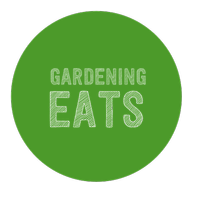Sage, which are known botanically as Salvia Officinalis, are a type of herbs that can easily be grown at home. Continue reading to learn the basics of growing sage as well as common mistakes to avoid along the way.
Best Time to Plant Sage
This will depend largely on your local climate, but as a rule of thumb, begin to plant the sage seeds during the cool days of spring or fall. This is the best time to ensure that the seedlings survive the weather.
To check when sage are most likely to thrive in your area, see the USDA Plant Hardiness Zone Map. If you live outside the US, do a quick search for ‘plant hardiness zone + [city]’.
How to Plant Sage the Right Way
There are a number of things to consider that will help you avoid some of the common mistakes of growing sage in your home garden.
Often overlooked, your soil can have a huge impact on how well your sage grow. Generally, your soil should be sandy, loamy, well-draining soil. Soil PH levels should be around 6.0 to 7.0.
10″ apart. 12″ apart. The seeds should be sowed at a depth of about .25″. For each plant, be sure to sow at least a few seeds to ensure that at least one of them will germinate.
Begin thinning your sage seedlings thin or transplant plants to 12 inches apart when they are 2 inches tall.
How Much Sunlight is Needed to Grow Sage
How Much to Water Sage
How Long Does it Take Sage to Germinate and Grow?
When to Harvest Sage
The best time to harvest your sage is almost any time, but you’ll get the best flavor when you pick leaves before the plant blooms.
Sage can grow up to about 12 to about 24 inches tall.
What Can Sage Be Used For?
Food Use: Use this herbs leaves to flavor meats and stuffings!
Flavor Profile: Mildly pungent with a savory flavor and slight pepper taste.
Can Sage Grow in Pots and Containers?
Yes, you will ideally need a 12″+ containerfor each plant. This can help control weeds and keep your plant from growing out of control.
It also gives you the flexibility to move your sage around if you need to adjust sunlight or bring it indoors to avoid harsh weather conditions.
Are Sage Safe for Bees?
Yes, sage are safe for bees.
According to GreenPeace.org, bees pollinate human food crops that make up about 90% of the world’s nutrition.
Given their importance in our ecosystem and food supply, I feel it is important to note that growing sage is bee-friendly.
